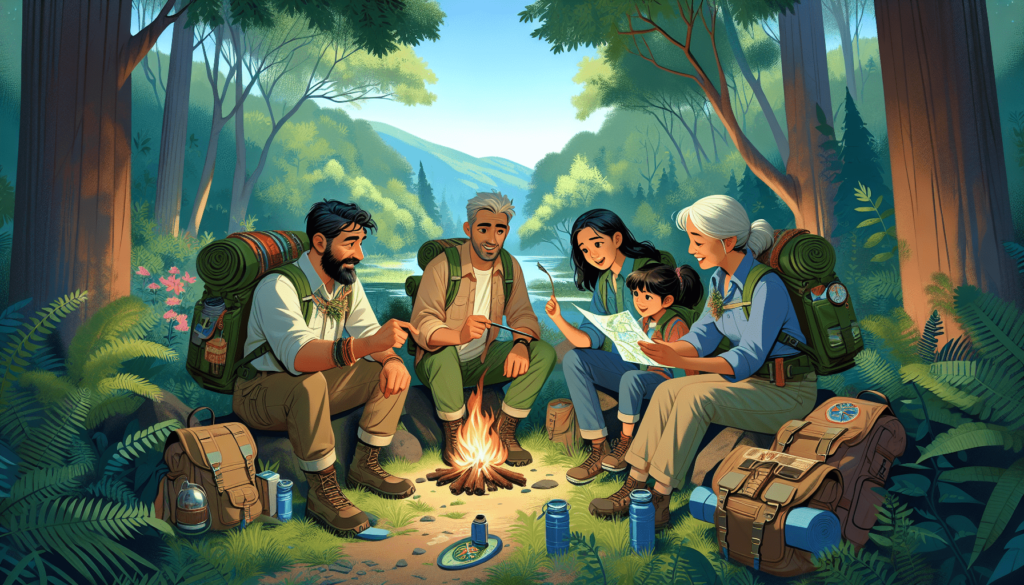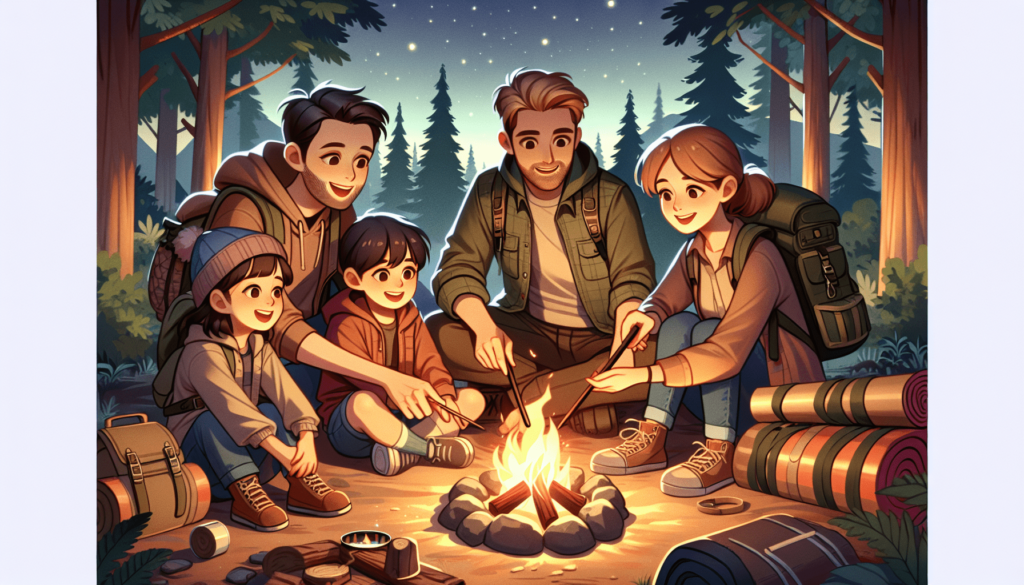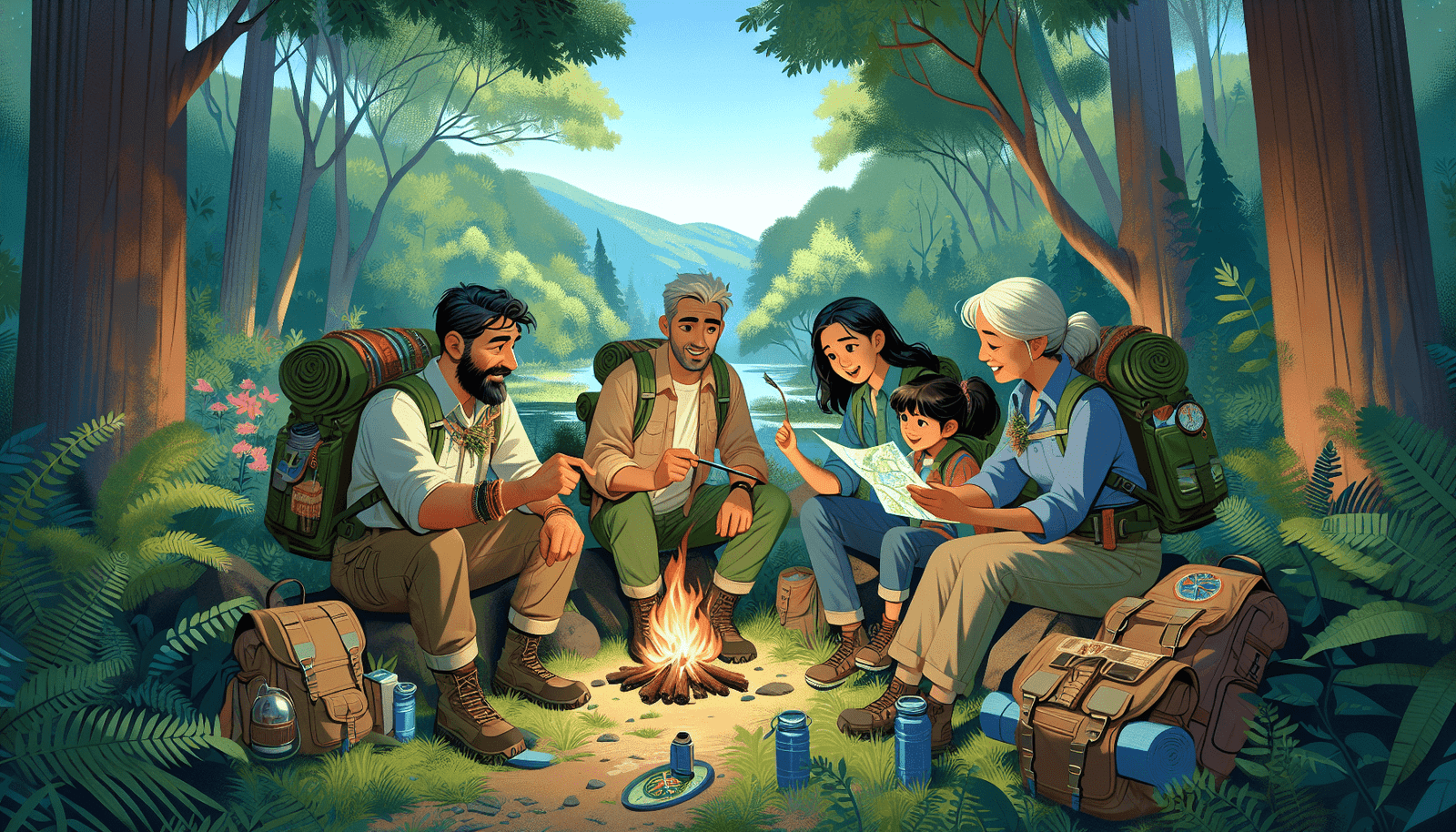Are you a parent looking for ways to keep your kids safe and engaged during family wilderness adventures? Look no further! In my blog, “The Survivalist Handbook,” I have curated a collection of articles under the category of “Wilderness Survival” that will equip you with the knowledge and techniques to thrive in any outdoor environment. From essential skills like building a fire and finding food and water, to specific threats and scenarios, my goal is to provide you with the tools to turn any outdoor challenge into a fun and educational experience for the whole family. So gear up and get ready to master the wilds together!

1. Importance of Family Wilderness Survival
When it comes to family activities, few things compare to the excitement and adventure of wilderness survival. Not only is it a great way to bond and create lasting memories, but it also instills important skills and values in children. Engaging kids in wilderness survival brings a host of benefits for their overall development, both physically and mentally. By teaching them basic survival skills, you are equipping them with the tools they need to navigate and thrive in any outdoor setting.
1.1. The Benefits of Engaging Kids in Wilderness Survival
Engaging kids in wilderness survival activities has numerous benefits that go beyond just adventure and fun. It teaches them valuable life skills such as problem-solving, resilience, and self-reliance. In a controlled and guided environment, children can learn to overcome obstacles, think critically, and adapt to unpredictable situations. These skills not only come in handy in the wilderness but are also transferable to everyday life. Moreover, engaging kids in wilderness survival fosters a love and respect for nature, encouraging environmental stewardship and a sense of connection to the natural world.
1.2. Teaching Kids Basic Survival Skills
Teaching kids basic survival skills is a crucial aspect of family wilderness survival. By equipping them with these skills, you are empowering them to take care of themselves and others in outdoor settings. Start by teaching them about fire building techniques, such as using a fire starter or gathering dry kindling. With proper guidance and supervision, kids can learn how to safely build and maintain a fire, which is essential for warmth, cooking, and signaling for help. Additionally, teaching kids how to find food and water sources and how to navigate using a compass or map are essential skills that will enhance their confidence and survival capabilities.
2. Essential Survival Skills for Families
When planning a family wilderness survival trip, it is important to ensure that everyone is equipped with essential survival skills. These skills can make all the difference in challenging situations and contribute to the overall safety and well-being of the family.
2.1. Fire Building Techniques for All Ages
Fire building is a fundamental skill for survival, and teaching all family members, regardless of age, how to build a fire is crucial. Children can learn how to gather dry tinder, kindling, and logs, and practice proper fire building techniques under adult supervision. Teach them about fire safety, including the importance of starting a fire in a safe area, keeping it contained, and extinguishing it completely when no longer needed. Being able to start a fire can provide warmth, cook meals, and offer a sense of security in the wilderness.
2.2. Finding Food and Water as a Family
In a survival situation, finding food and water sources is essential for sustaining life. Teach children how to identify edible plants and berries, as well as safe sources of water such as rivers, streams, and natural springs. Make sure to emphasize safety precautions and teach them how to purify water before consumption. Encourage the entire family to participate in foraging and fishing activities, turning it into a fun and educational experience for everyone involved.
2.3. Navigation and Orienteering with Kids
Navigation skills are crucial in the wilderness to ensure you can find your way back to safety. Teach children how to use a compass, read a map, and identify landmarks. Engage them in orienteering activities where they can practice their navigation skills in a controlled environment. This not only enhances their understanding of direction and spatial awareness but also boosts their self-confidence and ability to make decisions in unfamiliar surroundings.
3. Safety Measures for Family Wilderness Survival
While the wilderness can be an exhilarating place to explore as a family, it is important to prioritize safety at all times. Preparing and equipping children with the necessary safety measures and knowledge is crucial for successful family wilderness survival.
3.1. Proper Clothing and Gear for Kids
Proper clothing and gear are essential for keeping kids safe and comfortable in the wilderness. Dress them in layers to accommodate changing weather conditions and ensure they have sturdy footwear to protect their feet. Provide them with their own backpacks or bags where they can carry essentials such as water bottles, snacks, extra clothing, and a small flashlight. Additionally, outfitting them with appropriate safety gear such as hats, sunglasses, and insect repellent will help protect them from the elements and potential hazards.
3.2. Teaching Kids to Identify Dangerous Plants and Animals
In any wilderness setting, it is important to teach kids how to identify dangerous plants and animals. Educate them about common poisonous plants and teach them to avoid touching or ingesting them. Teach them to recognize venomous snakes or spiders and the importance of keeping a safe distance. By instilling this knowledge, you are helping them develop an understanding of potential hazards and how to mitigate the risks associated with them.
3.3. First Aid and Emergency Preparedness for Families
Familiarizing kids with basic first aid techniques and emergency preparedness is crucial for family wilderness survival. Teach them how to clean and dress wounds, apply basic bandages, and recognize signs of distress or injury in themselves or others. Provide them with a basic first aid kit and go over its contents and uses. Additionally, make sure to create a family emergency plan that includes communication strategies, designated meeting points, and emergency contact information. Practicing scenarios and drills can help kids develop the skills and confidence needed to respond effectively in a crisis.
4. Fun and Engaging Activities for Family Wilderness Survival
While wilderness survival is about learning important skills and staying safe, it can also be a fun and engaging family activity. By incorporating exciting activities into your family wilderness survival trip, you can create lasting memories while further enhancing essential survival skills.
4.1. Nature Scavenger Hunts
Nature scavenger hunts are a great way to engage kids in the wilderness while teaching them about their surroundings. Create a list of items or natural features for them to find, such as a certain type of leaf, a bird’s nest, or a specific rock formation. Encourage children to work together and explore their surroundings in search of these items. This activity not only enhances their observation skills but also fosters a sense of curiosity and appreciation for the natural world.
4.2. Building Shelters and Forts
Building shelters and forts using natural materials is not only a fun activity but also teaches kids valuable survival skills. Challenge them to create a shelter that can protect them from the elements and test it by spending a night in their creations. This activity encourages creativity, problem-solving, and teamwork. It also provides an opportunity for parents to teach children about different types of shelters and their advantages in various environments.
4.3. Wilderness Cooking and Foraging
Engaging kids in wilderness cooking and foraging activities can be an exciting way to teach them about food sources in the wild. Show them how to cook simple meals over a campfire or a portable stove, using ingredients that they can help gather or forage. Teach them about the importance of fire safety and proper food handling techniques. This activity not only enhances their culinary skills but also instills an appreciation for nature’s provisions and teaches them how to be self-sufficient in the wilderness.

5. Planning a Family Wilderness Survival Trip
When planning a family wilderness survival trip, careful consideration and preparation are essential to ensure a safe and enjoyable experience for everyone involved.
5.1. Choosing the Right Wilderness Location
Selecting the right wilderness location is crucial for a successful family survival trip. Consider the skill level and experience of all family members when choosing a destination. Opt for well-established camping areas or trails with amenities such as toilets, potable water, and nearby emergency services, especially if it is the family’s first time venturing into the wilderness. Research the area thoroughly and take into account factors such as weather conditions, wildlife activity, and potential hazards.
5.2. Creating a Survival Plan with Kids
Involving kids in the creation of a survival plan can make them feel more invested and prepared for the trip. Discuss the objectives and expectations of the trip, and allocate responsibilities to each family member. Create a checklist of essential items and ensure they are packed and ready before departure. Make sure to go over safety protocols and emergency procedures, and encourage kids to ask questions and share any concerns they might have. This collaborative approach not only empowers children but also ensures that everyone is on the same page and well-prepared for the adventure ahead.
5.3. Camping and Safety Rules for Families
Establishing camping and safety rules is crucial to ensure a safe and harmonious family wilderness survival trip. Set guidelines regarding campsite boundaries, proper waste disposal, and appropriate behavior when encountering wildlife. Teach kids about fire safety and the importance of extinguishing fires completely before leaving the area. Reinforce the importance of staying together as a group and checking in regularly. By establishing clear rules, you are ensuring the safety and well-being of the entire family.
In conclusion, family wilderness survival is a rewarding and educational experience for both parents and children. Engaging kids in wilderness survival activities not only fosters important life skills but also creates lasting memories and strengthens family bonds. By teaching kids basic survival skills, implementing safety measures, and incorporating fun activities into your family wilderness trips, you are equipping them with the knowledge and confidence needed to navigate and thrive in any outdoor setting. So gather your family, pack your gear, and embark on an unforgettable adventure in the great outdoors!

